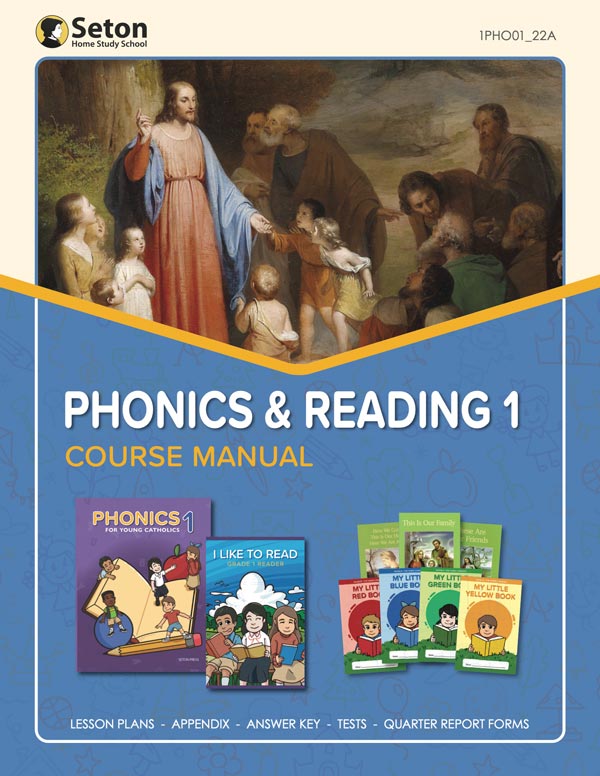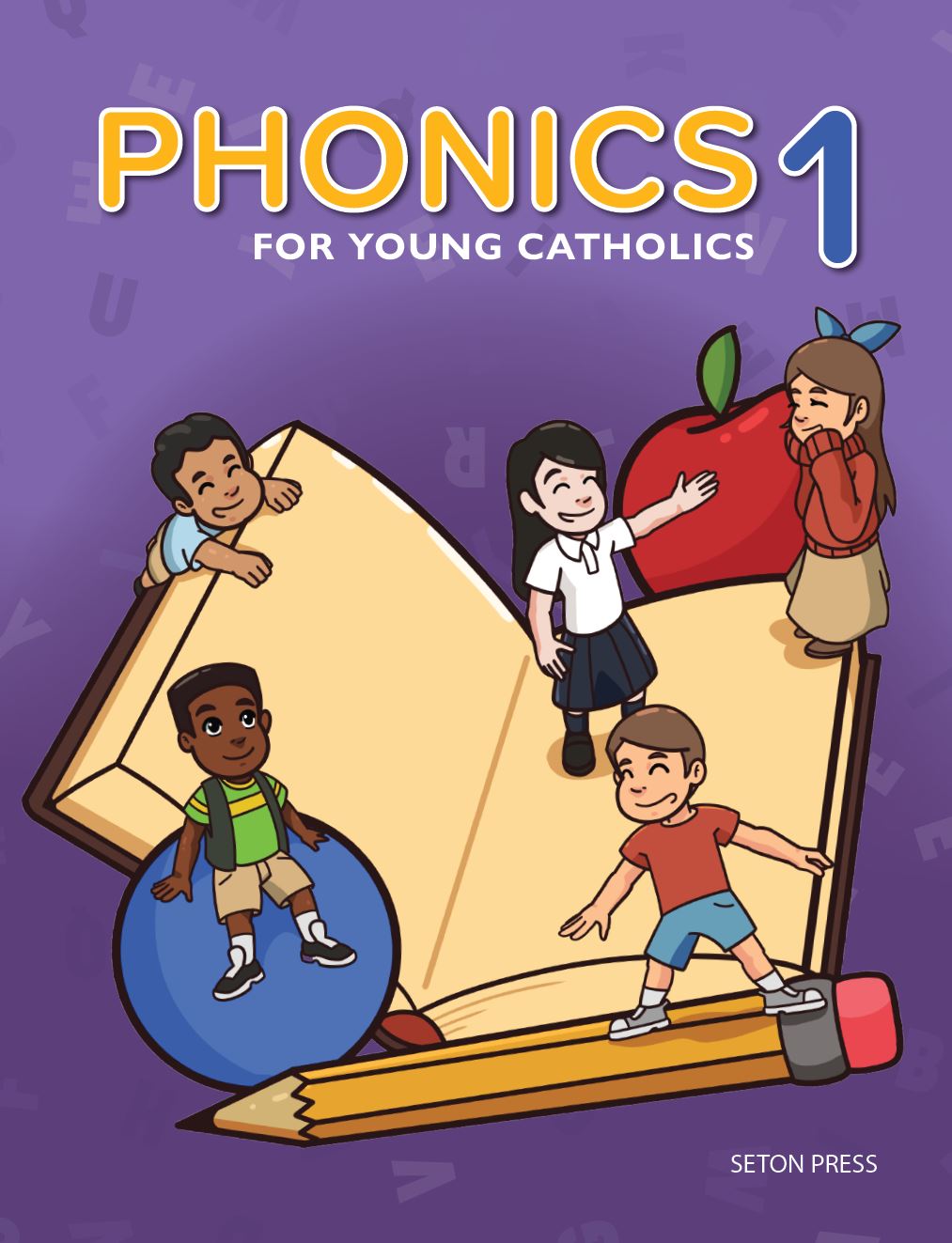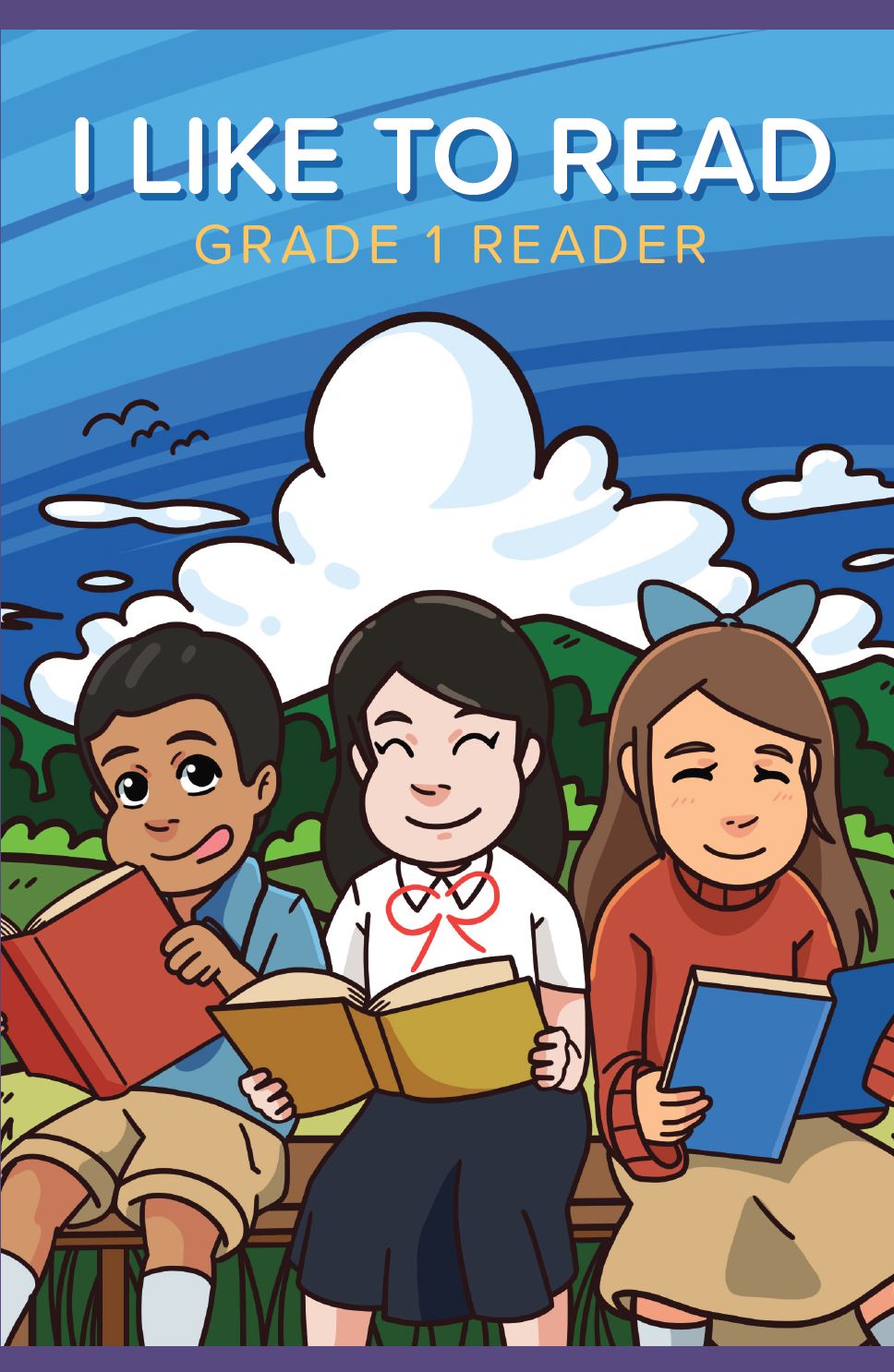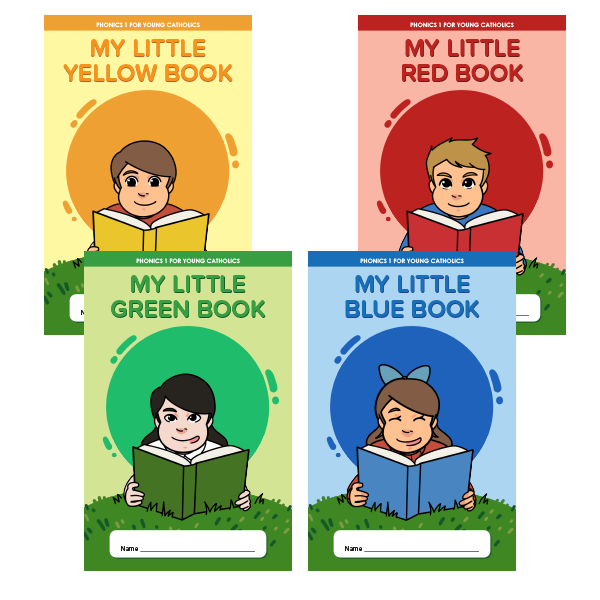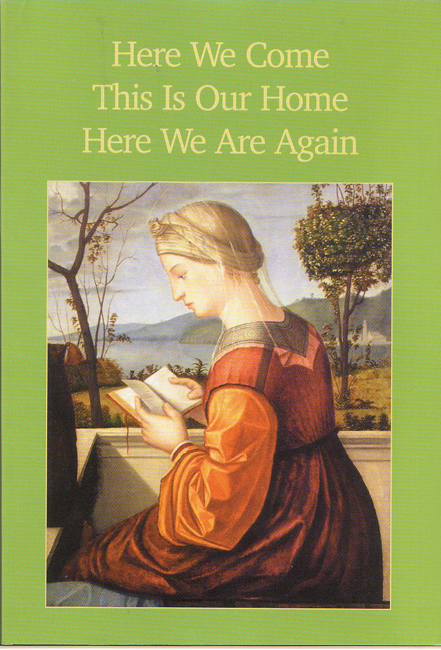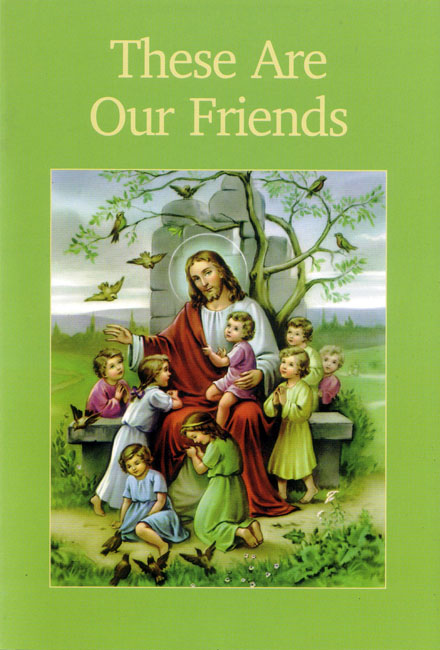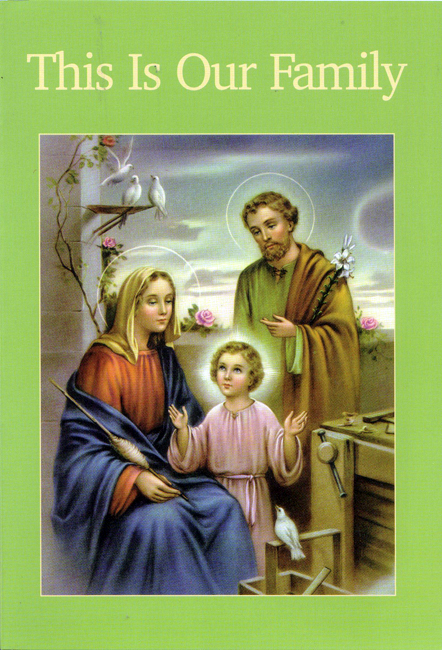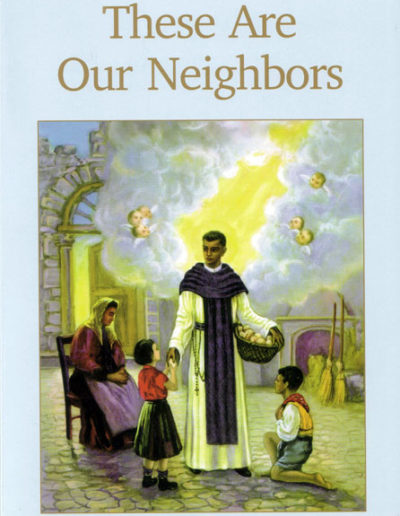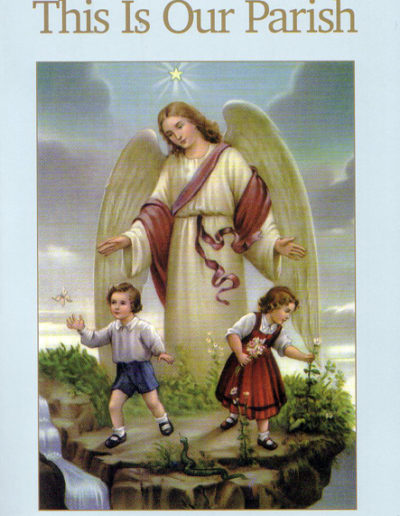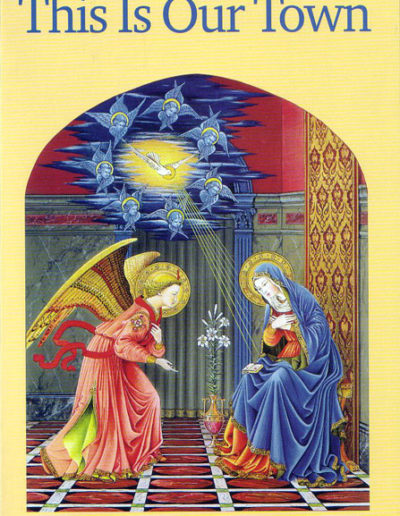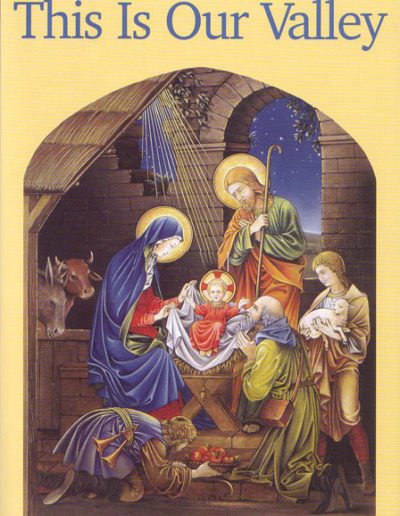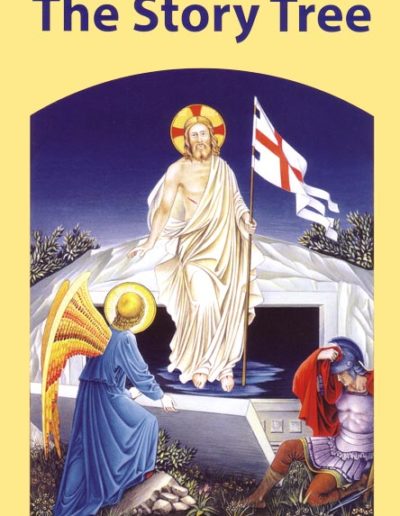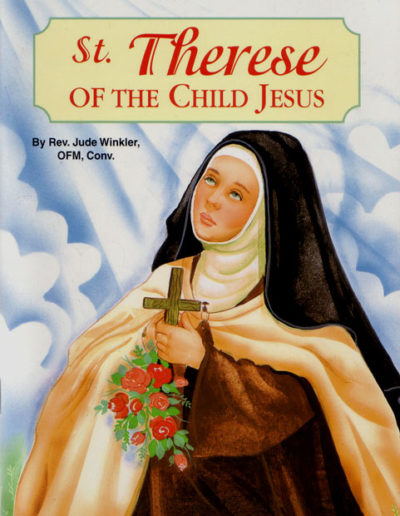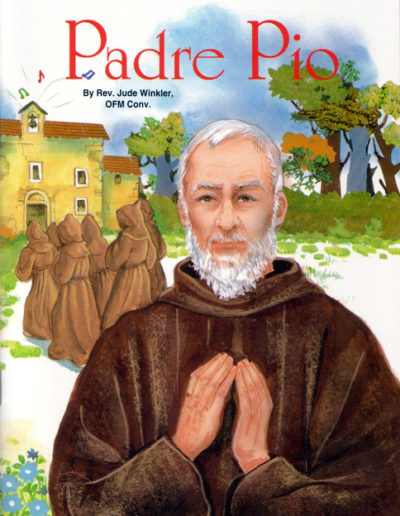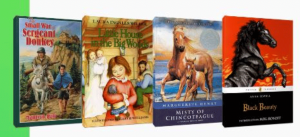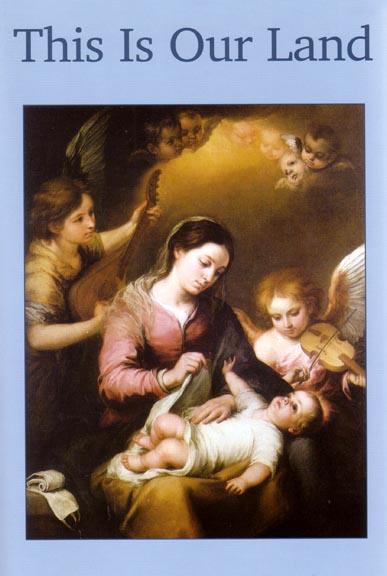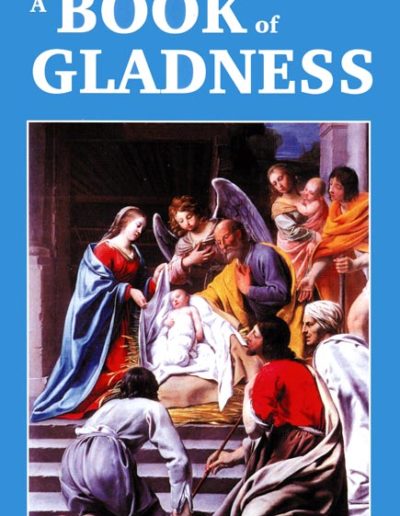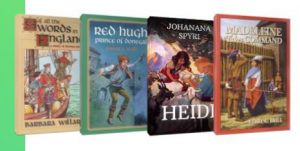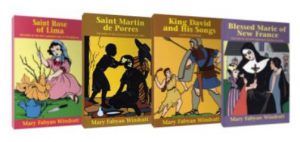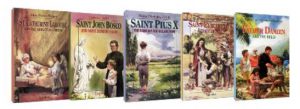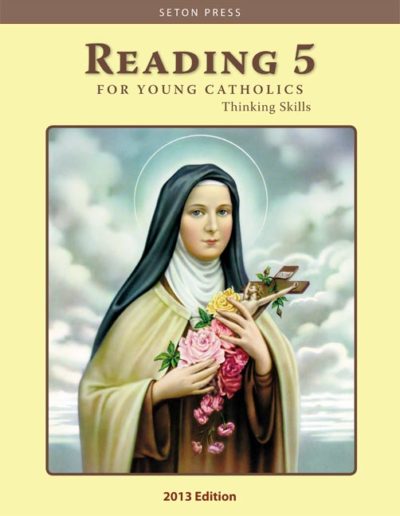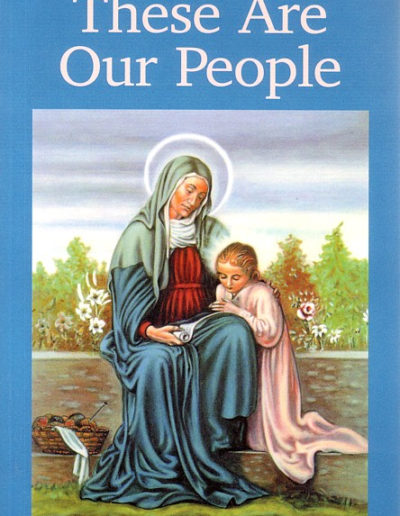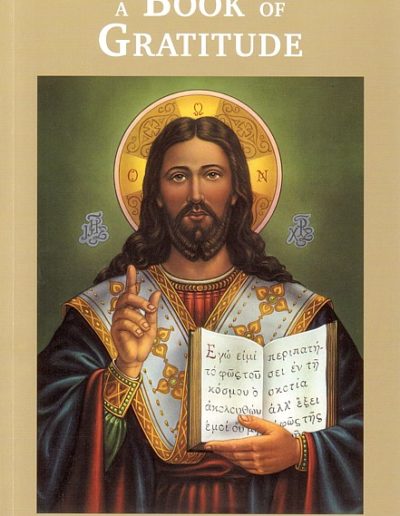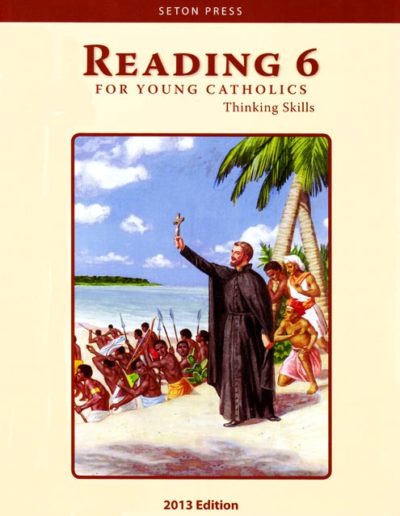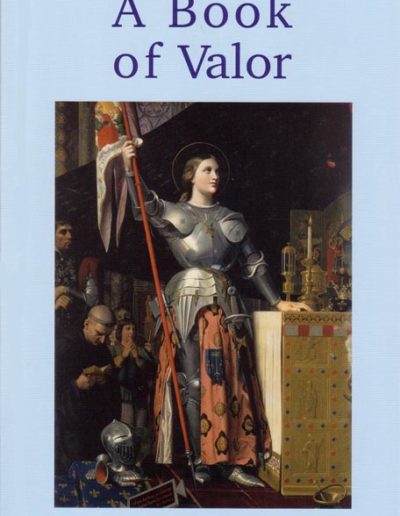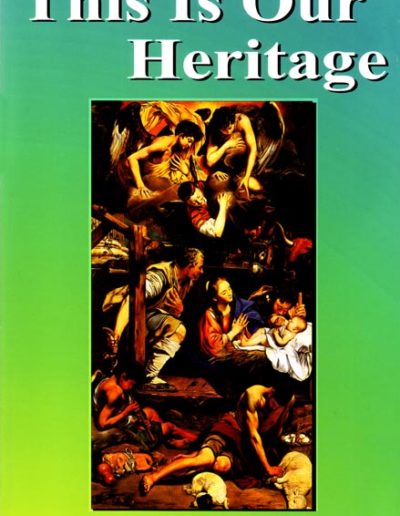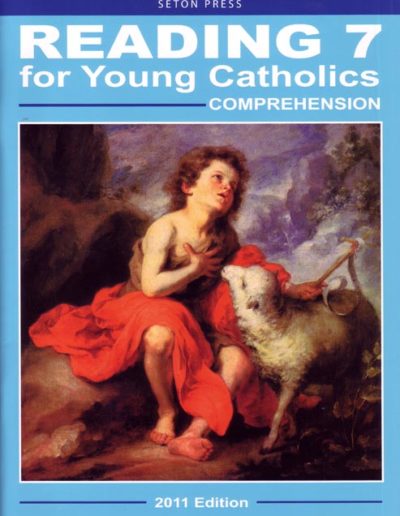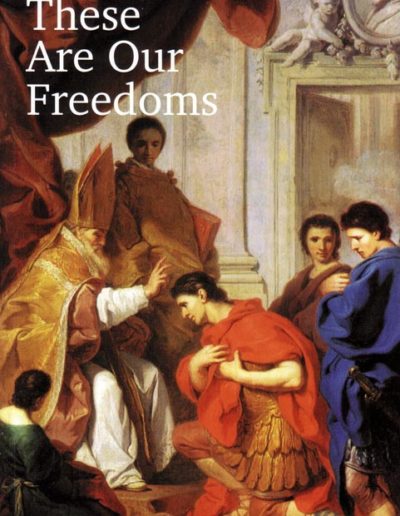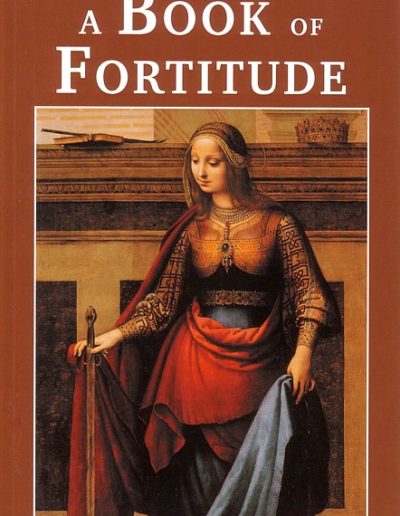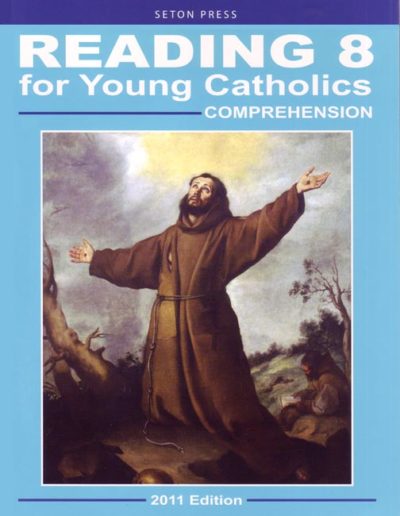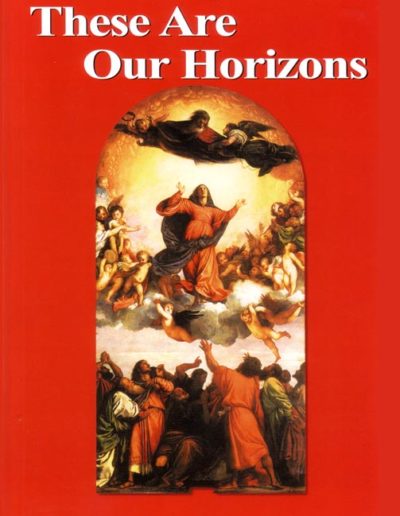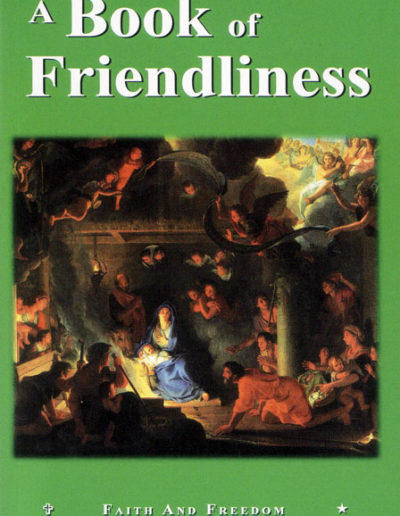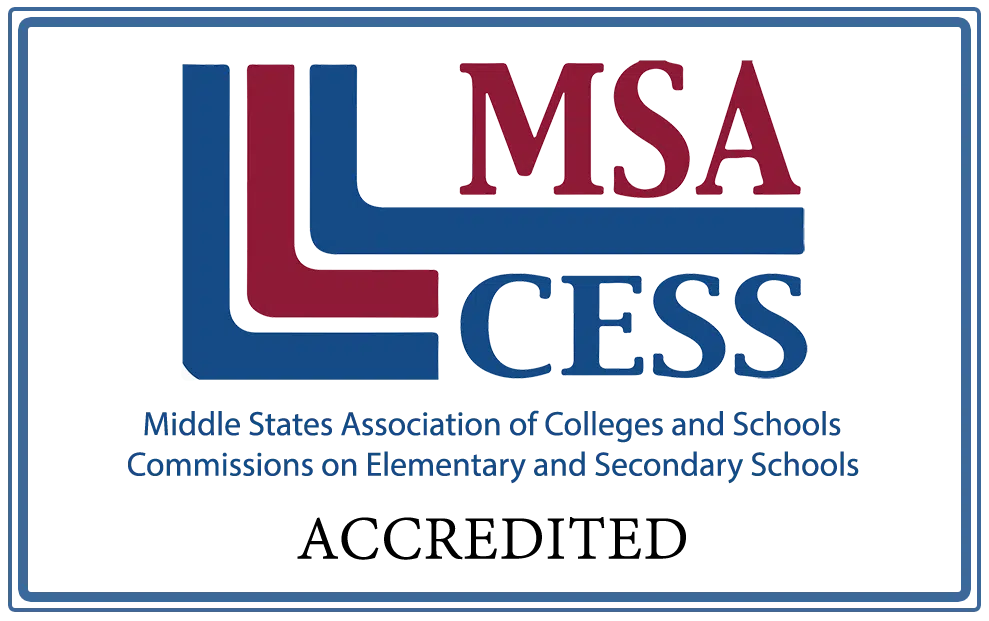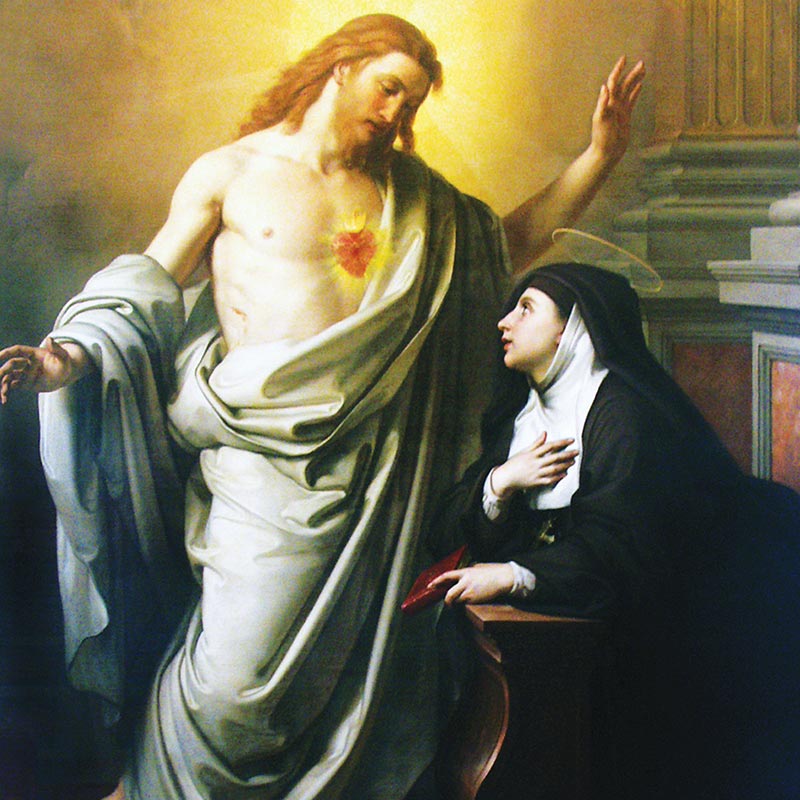
Seton’s Reading Program
Using the Faith and Freedom Reader series that was so popular in Catholic schools in the middle of the 20th Century as an anchor, Seton’s Reading program focuses on gradual comprehension improvement and teaching logical and analytical skills. Reading also use quarterly book reports, beginning in earnest in Fourth Grade, to practice report writing and early literary analysis. Half of the book reports are chosen from classic novels, including selections from Bethlehem Books, and the other half are saint biographies from the wonderful Mary Fabyan Windeatt and Vision Books series.
In Phonics 1 for Young Catholics, areas of study include long and short vowel sounds, beginning and ending consonant sounds, consonant blends, and consonant digraphs. Students also study the suffixes -ed and -ing. Throughout the course, students practice their reading skills using booklet readers and I Like to Read.
First graders then work through each of the readers: the Pre-Primer, This Is Our Family, and These Are Our Friends, from the classic Faith and Freedom series. The goal is for students to practice beginning skills in reading out loud and comprehension as they acquire vocabulary.
Reading 2
Students improve reading fluency as they read stories, poems, and non-fiction selections from the Faith and Freedom series of Catholic readers:These Are Our Neighbors, This Is Our Parish, and A Book of Sanctity. Second graders use phonetic strategies to read orally with correct pronunciation and dramatic expression.
They also demonstrate beginning skills in comprehension. Students begin book reviews this year using Saint Francis of Assisi and Good Saint Joseph. These book reviews consist of forms that the student fills out, identifying the title, author, setting, main characters, and main events of the book. Students conclude each review by giving an opinion of the book.
Reading 3
Students develop reading skills using storybooks and short selections from the Faith and Freedom readers: This Is Our Town, This Is Our Valley, and The Story Tree. In third grade, students are able to read more fluently and accurately.
They improve their ability to draw conclusions, sense relationships between ideas, and use clues to discover the meaning of new vocabulary. Stories of St. Joseph and St. Bernadette are provided for the first two book reviews. Students complete book reviews by identifying the book’s title, author, setting, and main characters.
Students conclude the review by writing a paragraph about the story. Reading 3 for Young Catholics: Comprehension builds skills to aid in book reviews.
Reading 4
The transition from third to fourth grade is important. Students have moved beyond learning to read; they are reading to learn. They continue the Faith and Freedom series with This Is Our Land and A Book of Gladness.
They use the Reading 4 for Young Catholics: Comprehension and Reading 4 for Young Catholics: Thinking Skills workbooks to learn comprehension and critical thinking. They begin complete book reports. The book report process is broken down into steps: gathering information, collecting examples to support the topic sentence, creating an outline, and writing a four-paragraph essay on the book.
For the first quarter, students are taught how to write a book report using the example book, The Small War of Sergeant Donkey. For the second quarter book report, students are provided with the opening paragraph and the topic sentences of the body paragraphs are provided. Students write their own opening paragraphs and topic sentences for the last two book reports.
Book Report Options
1ST & 2ND QUARTER
- The Small War of Sergeant Donkey
- Black Beauty
- Little House in the Big Woods
- Misty of Chincoteague
- The Cabin Faced West
- Charlotte's Web
3RD & 4TH QUARTER
- Saint Thomas Aquinas
- Saint Catherine of Siena
- Patron of First Communicants
- The Miraculous Medal
- The Curé of Ars
- Saint Thérèse
- Father Marquette
- Saint Dominic
Reading 5
The fifth grade reading course continues with Faith and Freedom readers, These Are Our People, and A Book of Gratitude. Students continue to build comprehension and thinking skills using the Reading 5 for Young Catholics:
Comprehension and Reading 5 for Young Catholics: Thinking Skills workbooks, and they continue with quarterly book reports. Students are expected to comprehend what they read and think about what the author is trying to convey to the reader.
Quarterly book reports expand to a five-paragraph format. For the first two book reports, topic sentences are provided in the lesson plans.
Book Report Options
1ST & 2ND QUARTER
- If All the Swords in England
- Red Hugh Prince of Donegal
- Madeline Takes Command
- Heidi (ebook available on MySeton)
- Number the Stars
- The Lion, the Witch, and the Wardrobe
3RD & 4TH QUARTER
- Saint Rose of Lima
- Saint Martin de Porres
- King David and His Songs
- Blessed Marie of New France
- Saint Catherine Labouré
- Saint John Bosco
- Saint Pius X
- Saint Elizabeth’s Three Crowns
- Father Damien & the Bells
Reading 6
Students work with Faith and Freedom readers: This Is Our Heritage and A Book of Valor. They continue to build their skills using the Reading 6 for Young Catholics: Comprehension and Reading 6 for Young Catholics: Thinking Skills workbooks. Four book reports are required, continuing the same format the student practiced in grade five.
For the assigned books in the first two quarters, topic sentences are provided for book report paragraphs. In the third and fourth quarter reports, students rely on their own writing and analytical skills to write topic sentences.
Book Report Options
1ST & 2ND QUARTER
- Beorn the Proud
- Swiss Family Robinson
- The Winged Watchman
- Adam of the Road
- The Good Master
- Blue Willow
3RD & 4TH QUARTER
- St. Dominic
- St. Benedict
- The Children of Fatima
- St. John Masias
- St. Philip of the Joyous Heart
- Mother Cabrini Missionary to the World
- St. Francis of the Seven Seas
- St. Ignatius and the Company of Jesus
- St. Thomas More of London
Reading 7
Seventh grade reading builds students’ abstract thinking and analysis skills. The Reading 7 for Young Catholics: Thinking Skills and Reading 7 for Young Catholics: Comprehension workbooks are central in introducing new literary elements: conflict, motifs, and theme. Students learn to identify these and other literary elements in classic short stories and in episodes from the life of St. Margaret Mary, preparing them to analyze full-length novels for these elements later, in high school.
Each of the four book reports uses the five-paragraph format done in previous years. This year the student incorporates a thesis statement into the essay to tie it together.
Book Report Options
1ST & 2ND QUARTER
- Johnny Tremain
- Men of Iron
- Singing Tree
- Augustine Came to Kent
- The Crystal Snowstorm
- Anne of Green Gables
3RD & 4TH QUARTER
- The Little Flower
- St. Hyacinth of Poland
- The Cure of Ars
- St. Louis de Montfort
- St. Isaac and the Indians
- St. Anthony and the Christ Child
- Edmund Campion: Hero of God's Underground
- Saint Joan: The Girl Soldier
- Bernadette: Our Lady's Little Servant
Reading 8
Students improve comprehension and literary analysis skills using Reading 8 for Young Catholics: Comprehension as they continue to identify characters, plot, theme, and other elements that they will later encounter in high school literature courses.
In Reading 8 for Young Catholics: Thinking Skills, students apply these skills both to classic short stories and selections from the life of St. Joan of Arc. Each quarterly book report requires a thesis statement that is supported in the five-paragraph analysis. Students will find this classic five-paragraph format useful for years to come.
Book Report Options
1ST & 2ND QUARTER
- 20,000 Leagues Under the Sea
- The Yearling
- The Hidden Treasure of Glaston
- Outlaws of Ravenhurst
- The Secret Garden
- The Witch of Blackbird Pond
3RD & 4TH QUARTER
- St. Francis Solano
- St. Paul the Apostle
- St. Margaret Mary
- Francis and Clare: Saints of Assisi
- Mother Seton and the Sisters of Charity
- St. Vincent de Paul
- St. Katharine Drexel
- St. Thomas Aquinas and the Preaching Beggars
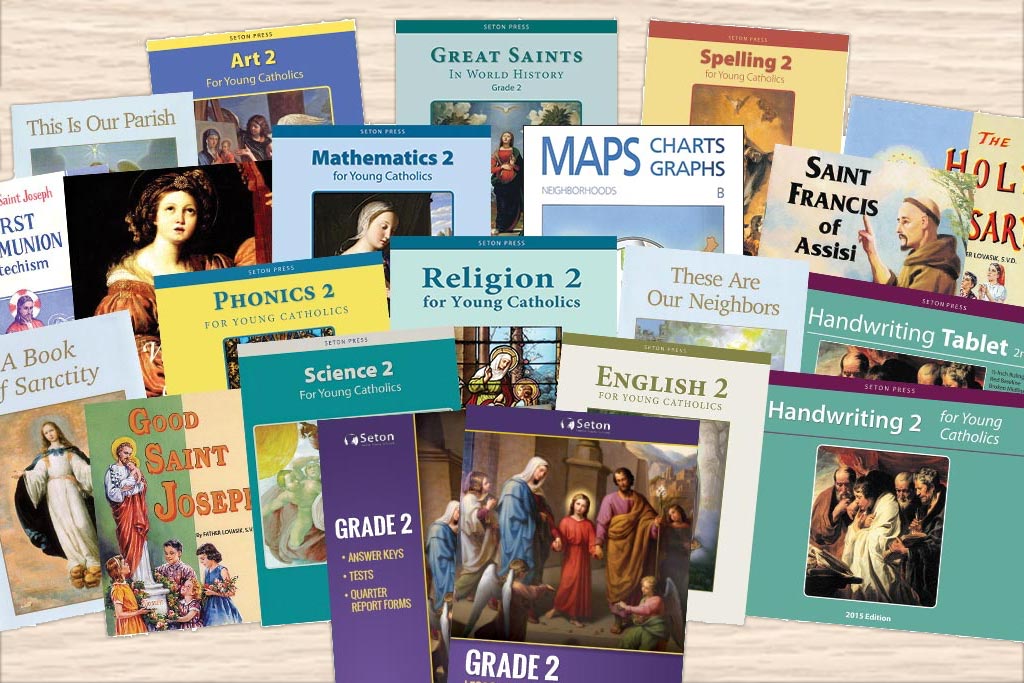
Full Enrollment
Learn More
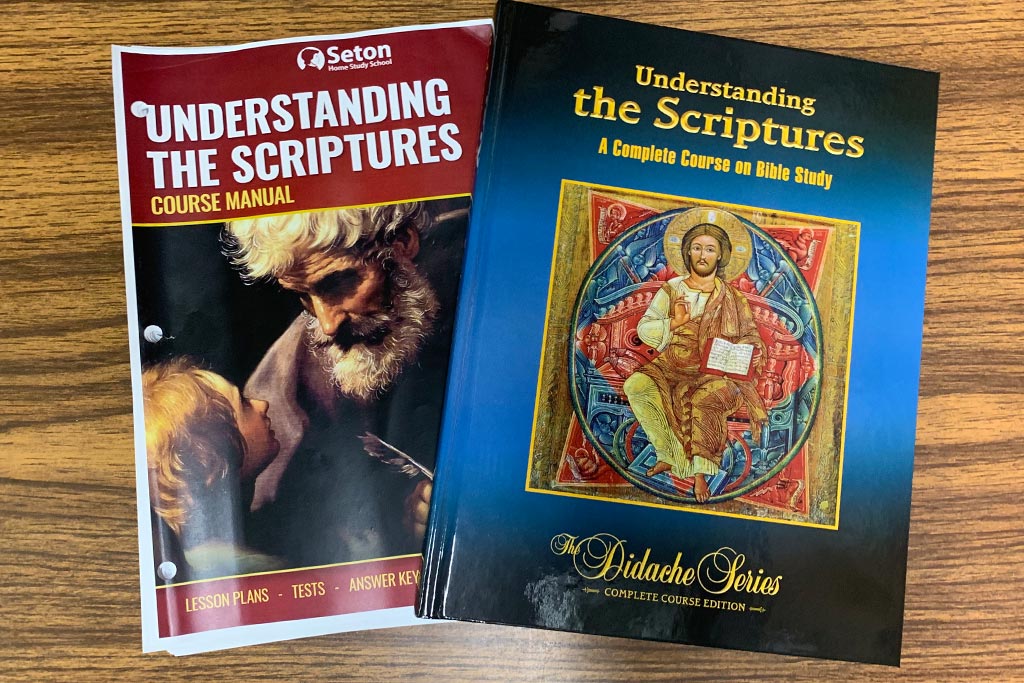
Single Course Enrollment
Learn More

Book Sales
Learn More
The Value of Your Enrollment
Your enrollment provides you with much more than just a box of books. It provides an accredited education, a strong support system, and a community of staff and homeschoolers who are in your corner. It provides access to academic and support counseling, grading and record keeping, and a solid Catholic curriculum that promotes strong Catholic values in each and every subject.
Catholic Materials
All of our books and materials are thoroughly Catholic, from beginning to end.

